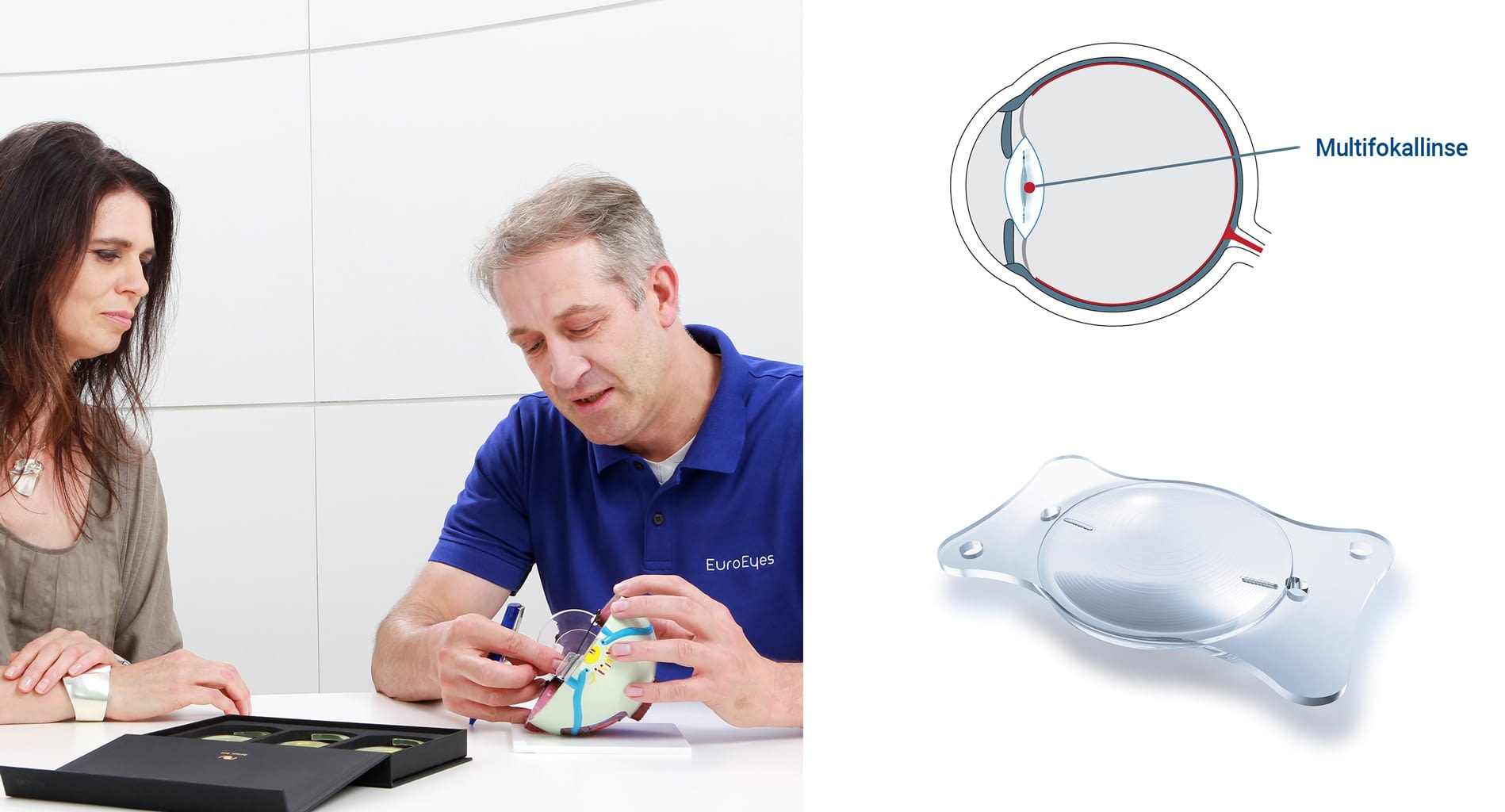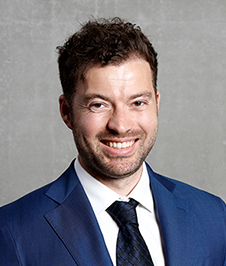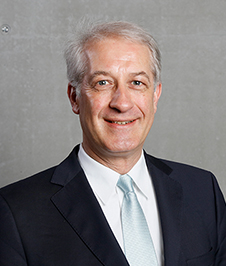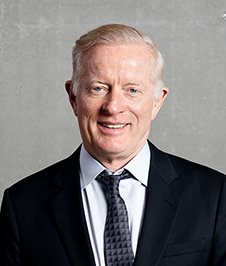RLE - THE METHOD AGAINST PRESBYOPIA SIMPLY EXPLAINED
What is refractive lens exchange?
Replacing refractive lenses, also known as CLE “clear lens extraction”, is an option for people with presbyopia (presbyopia) , myopia (nearsightedness) and hyperopia (farsightedness) to correct them.

Refractive Lens Exchange (RLE) replaces your eye’s clear natural lens with an artificial intraocular lens (IOL) to correct your refractive error and get a sharper focus. This reduces the need for reading glasses, bifocal glasses or progressive glasses.
Refractive lens replacement is usually suitable for people with presbyopia or farsightedness and for people with nearsightedness (for whom LASIK , PRK, or phakic IOL operations are generally not suitable).
If you have both presbyopia and myopia or hyperopia, RLE may be the only viable option for clear vision and minimal reliance on glasses after refractive surgery. The procedure for replacing refractive lenses is practically identical to cataract surgery. The difference is that in RLE, the lens to be replaced is clear and not a cloudy lens due to a cataract.
As with cataract surgery, different types of intraocular lenses are available to replace your natural lens, depending on your visual needs and the health of your eyes.
These are:
* Fixed focus monofocal IOLs. Monofocal lenses provide clear vision in the distance or in the middle or close range – but not all three at the same time. Toric IOLs used to correct astigmatism are also classified as monofocal IOLs.
* Multifocal IOLs . A multifocal lens offers clear vision at several distances: distance + intermedia + near vision at the same time.

There is no such thing as a “one size fits all” intraocular lens, and your eye surgeon will recommend an IOL that is best suited to your individual needs.
Refractive lens exchange:
The lens replacement procedure usually takes about 10 minutes and is performed on an outpatient basis. Each eye is treated separately, usually about a day apart. Numbing drops of anesthesia are used during RLE so there is usually no discomfort and most people report an immediate improvement in vision after surgery.
The initial recovery from refractive lens replacement – when you can resume normal daily activities – usually takes a few days.
The final results of refractive lens replacement can take 1-2 weeks, and you may notice some vision disturbances such as blurred vision, halos and glare, or a “itchy” feeling of dry eye while your eyes are healing. Depending on the instructions from your eye surgeon, you should be able to get back to work and drive again within a few days of the surgery. You usually don’t feel an IOL in your eye. And because the lens implant is in your eye and not on the surface like a contact lens, it will not be visible to others.
The artificial intraocular lens is a permanent replacement for your natural lens designed for the rest of your life. In addition, there is minimal risk of regression (loss of corrective power or deterioration in vision) over time.

How is RLE performed?
RLE is performed using a drop anesthetic. A spring clip that holds the eyelids apart allows you to blink safely during surgery. Your surgeon will look through a microscope to perform the surgery. You are lying under an operating tent with fresh air coming in. A sticky plastic towel will cover the skin around your eye and keep the eyelashes out of the way. Some clinics offer operations for both eyes on the same day. Usually, surgery on the second eye is delayed for a day to ensure that your first eye is making good progress.
The surgery usually takes about 10 minutes per eye. You can go home the same day. Strong pupillary dilatation drugs are given as drops under the lower eyelid to prepare your eye for surgery.
Essential steps in surgery are:
• Entry points – formation of small, self-sealing entry points in front of the eye at the junction of the white of the eye and the cornea
• Capsulorhexis – removing a circular disc from the front of the membrane covering the natural lens called the lens capsule (think of the skin of a grape and you will get the correct mental picture of the thin, clear shell of the natural lens).
• Phacoemulsification – liquefaction and removal of the natural lens from the lens capsule using a high frequency vibrating probe, liquid washing and vacuum
• IOL Insert – Place the IOL and unfold into its natural position within the lens capsule using a support gel to fill the front of the eye
• Wash out and refill – wash out the support gel and refill it with liquid and antibiotics
Femto second lasers are now partially used in the preparatory phase before going to the operating room. Femto-second lasers can make it easier for surgeons to safely and consistently perform certain phases of surgery (particularly capsulotomy). This additional laser step takes about five minutes and is done with eye drops to numb your eye.
Who is suitable for the RLE?
If you are over 40-50 years old with presbyopic issues and want to get rid of those near and far glasses, you are likely eligible for RLE.
Almost any level of presbyopia combined with myopia (nearsightedness) or hyperopia (farsightedness) can be corrected by RLE, and IOLs with built-in astigmatism correction are available. Lens implantation techniques can be combined with laser eye surgery in suitable patients to expand the range of astigmatism treatment or to optimize the focus result.
They may not be suitable for multifocal IOL implantation if you already have problems with your eye health.
What are the risks?
With all forms of eye surgery, problems can arise during the operation or afterwards in the healing phase. Problems can result in loss of best vision (vision that is worse than the driving standard of the affected eye and cannot be corrected with glasses or contact lenses).
More often, such problems can be resolved by changing the medication or performing additional surgery. Typically these additional surgeries are much smaller than the original surgery and have a quick recovery period.
An additional second surgery may be needed to correct a complication from the initial surgery. With or without RLE, retinal detachment is more common if you are very myopic. However, the risk of retinal detachment may be higher after RLE surgery. These patients therefore require post-operative follow-up care.
Statistical techniques (biometric formulas) and eye measurements (biometrics) serve as a guide in choosing the IOL needed to correct your eyesight. Small accuracy limits of these techniques mean that sometimes laser vision correction is required to fine-tune the focus to improve the visual result after RLE.
The most common cause of blurred vision after RLE is opacification of the posterior capsule (PCO). This is a gradual fogging of the membrane just behind the IOL that affects many patients. PCO can occur months or years after surgery and is usually successfully treated with a one-time small laser procedure called a YAG laser capsulotomy.
Risks of Wearing Contact Lenses: Continuing with contact lenses is often the primary alternative for people considering RLE corrective surgery. If you follow the correct safety instructions, the risk of wearing contact lenses is low. But about 1 in 3,000 people a year develop a severe corneal infection.
Different types of intraocular lenses:
IOL implantation is like installing your glasses or contact lenses in your eyes. There are two main types of IOLs:
a) Monofocal IOLs – monofocal IOLs aim to reduce
glasses dependency for distance vision (driving vision)
b) Multifocal IOLs – Multifocal IOLs aim to reduce addiction to glasses for a wider range of activities, including medium vision (computer screens) and near vision (reading).
If you are eligible for RLE, your surgeon will discuss which type of IOL is the best option for you

What are the advantages?
– About 90% of patients are completely free of glasses after RLE with widely used multifocal IOLs.
If you still need glasses to support you after the operation, they are usually intended for a specific activity in the near, medium or long range.
– Approximately 95% of patients are satisfied with the outcome of the surgery, and many describe it as life changing
– The method is designed to make you less dependent on the life with glasses and contact lenses and to help you lead an active lifestyle more easily.
– RLE eliminates the need for cataract surgery later in life and is often preferred to laser vision correction for patients of retirement age who often already have the early stages of cataract formation.
Unless there is a new health issue in the eye, eyesight will usually remain good and your glasses prescription will usually remain stable after RLE. If you notice deterioration in vision in the years after surgery, it can often be reversed with a one-time quick treatment.
Are you also interested in a treatment at EuroEyes or would you like to find out more about us? Then please contact our service center or fill out our contact form. We look forward to you!
Contact form (click here)
+49 40 348 09 29 0 – service center in Germany (English, German and Chinese)
Monday to Friday: 08:00 – 19:00
Saturday: 09:00 – 14:00
About EuroEyes
The EuroEyes Clinic Group is a globally successful company that was founded over 25 years ago in Hamburg and has its headquarters there to this day. In addition to locations throughout Germany, EuroEyes is also represented in China and Denmark. The clinic offers patients the entire spectrum of refractive surgery for the correction of ametropia. With the most modern eye laser and lens surgery procedures EuroEyes treats over 25,000 patients with myopia or farsightedness , astigmatism , presbyopia or cataracts every year . The interventions enable the start of a life free of glasses and contact lenses without impairment of vision and quality of vision.


















Join our Newsletter